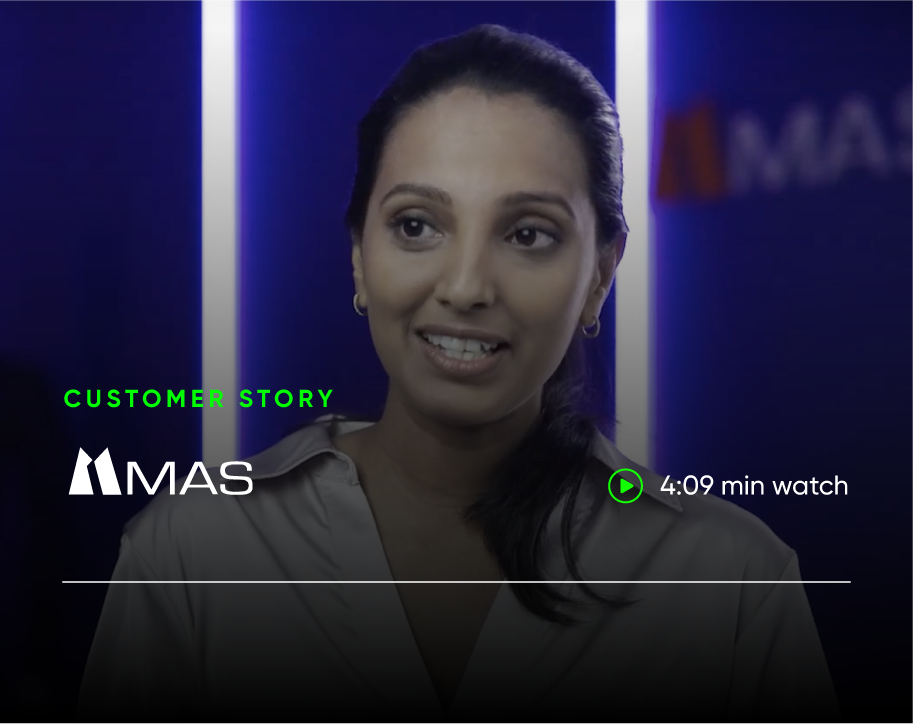Tendam Cuts Time to Market with Smarter Product Development
Tendam leverages Browzwear's 3D tech to boost speed-to-market, enhance creativity, and reduce waste across its fashion brands.
July 9, 2024


4,000+ unique 3D styles annually

2× faster time-to-market

100 styles in weeks by 1 designer

50% shorter lead times
Founded in 1986, MAS Holdings is a global leader in apparel and textile manufacturing, specializing in intimate apparel, swimwear, sportswear, and performance wear. Always at the forefront of innovation, MAS established the Digital Product Creation (DPC) Centre of Excellence in 2017, embarking on a journey to revolutionize its product creation process and elevate its success to new heights through cutting-edge technology.
Today, MAS annually develops over 4,000 unique 3D styles across 50+ brands.
Anupama Fernando, Head of the DPC Centre of Excellence, highlights the strategic value of 3D in MAS' product creation space: "Our ambition is to pursue a game-changing level of impact in lead time, agility, and sustainability." To achieve this, MAS has built strong foundational capabilities in technology, process, and people. Today, DPC is part of the enterprise-wide strategy at MAS, aligned to business impact.
"DPC is a core capability in our product creation space. Since starting off in 2017, we've now built it as an enterprise-wide strategy aligned to our business goals."
.png)
A key aspect of true-to-life digital garments is the accuracy of materials. Hasini Weerasinghe, Project Lead at the DPC Centre of Excellence, explains, "Having accurately digitized materials is extremely important when creating an authentic digital twin. Capturing the material's physical properties correctly helps us ensure that the material's stretchability, bendability, and drapeability properties are incorporated into the 3D garment correctly."
At present, all fabrics across MAS’s apparel and supply chain companies are scanned at their dedicated centralized digitization units, adhering to industry standards and brand guidelines.
Taking digitization a step further, leveraging Browzwear's open API integration, MAS has successfully onboarded material visualization without a physical sample at the fabric design stage. Today, their lace division has the capability to digitally visualize lace as a photorealistic material, which gives them an opportunity to improve customer experience by replacing 2D lace sketches with 3D materials, which are then incorporated into a garment in VStitcher.
Harnessing the power of digital twins, MAS has developed new ways of collaborating with brands to launch products. Serena De Alwis, Assistant Manager—Design, notes, “Using the Browzwear suite of platforms enables collaboration at a much deeper level, which helps reduce lead times from an idea to concept stage and helps us work with brands in real time across the world. Most importantly, it allows us to make more accurate product decisions."
Ensuring the technical accuracy of the digital twin is of utmost importance for MAS in taking the digital twin end-to-end in the product development process with manufacturability. MAS achieves this by ensuring samples are created by people with a product development background.
Kaushayla Dasanayake, General Manager - Technical, highlights the collaborative advantages of Browzwear platforms, "With 3D coming into play, we witness how our workflow becomes smoother and more efficient." Digital twins have increased the accuracy of predictions and the development of sustainable products. Collaborations with technology partners like Browzwear have further enhanced the quality of the user experience.” Browzwear continues to partner with MAS to improve the accuracy of the tools and ensure optimum accuracy and a better user experience.
MAS has built the FLEX business model, incorporating best practices in DPC across the group, which allows brands to launch products two times faster to market.
The innovative FLEX business model, as described by Shehan Ferdinandis, Director of Digital Business, underscores the shift towards a digital-first approach. "Flex is a unique mind-to-market business model that allows brands to decide what they want to buy, when they want to buy it, and in what quantity. The most significant change we've made to our process is making our product creation digital first." Tools like Stylezone have enabled MAS to co-create with brands, improving hit rates and halving lead times."
"Remarkably, a collection of 100 styles can be created in a matter of weeks by just one designer."
.png)
Browzwear’s open API integration has enabled FLEX to use other collaborative tools to enhance co-creation, increasing speed and agility to ensure a seamless product creation experience for their customers.
Reflecting on the journey, Anupama Fernando shares, "Today, DPC is a mature capability across our apparel teams, and we are now bringing our supply chain teams on board to build this capability. The value of DPC goes beyond just digitizing the workflow. It's about re-imagining how we create, make, and sell products."
She attributes their success to three key factors: ambition, talent, and execution. "We set bold targets, challenging ourselves to push the boundaries of what's possible today.”
"Our success comes from continuously pushing our boundaries for today and looking for improvement for future tomorrow."
.png)
Through the strategic implementation of technology, such as Browzwear's suite of solutions, MAS Holdings has enhanced its product creation process and set a new benchmark for innovation and efficiency in the apparel industry.
Tendam leverages Browzwear's 3D tech to boost speed-to-market, enhance creativity, and reduce waste across its fashion brands.
Discover how Perry Ellis uses Browzwear’s 3D technology to enhance design efficiency, cut costs, and innovate with a smart-to-market approach.
Discover how Jiangsu Zhuri Textile cuts costs, shortens cycles, and drives sustainable growth with Browzwear’s digital product development.